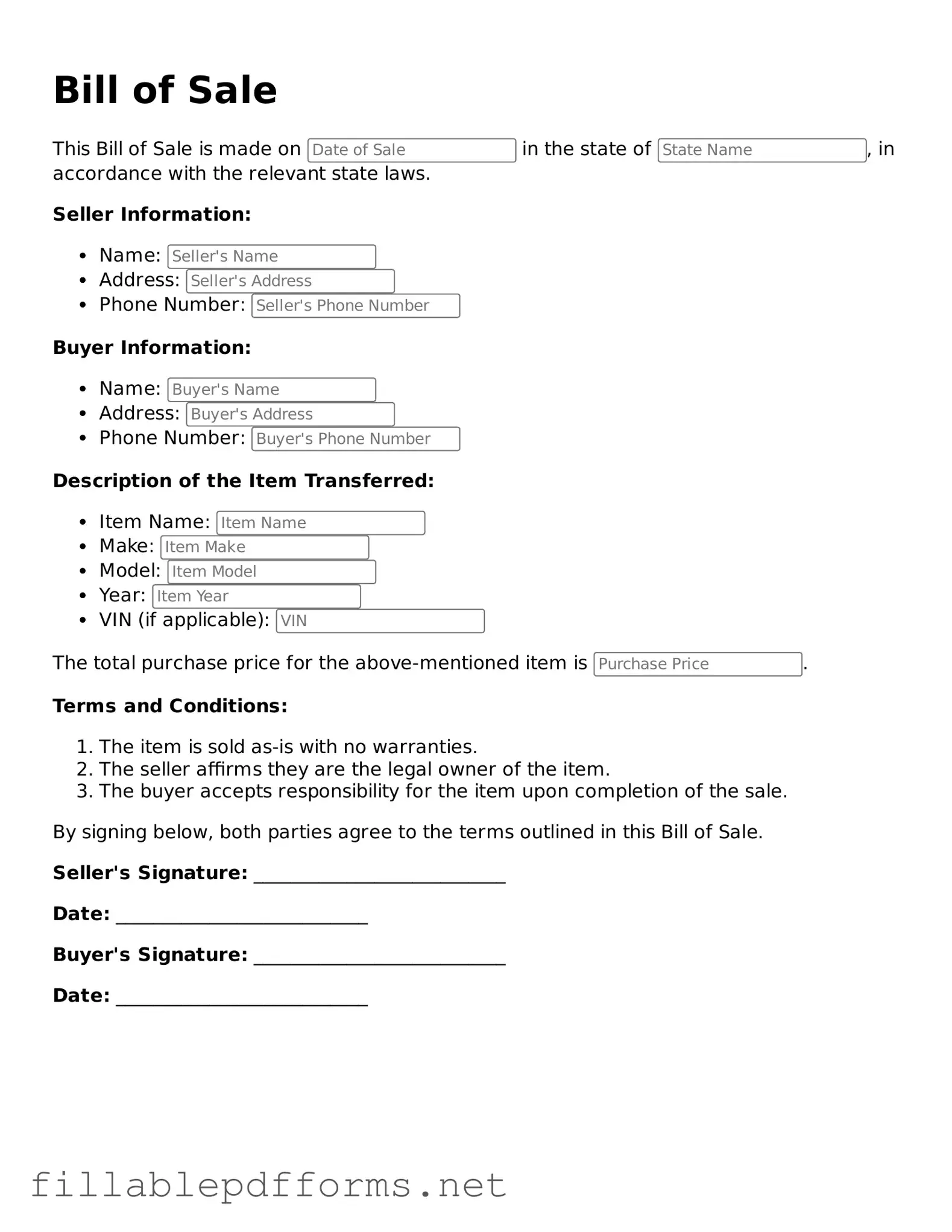Blank Bill of Sale Template
A Bill of Sale is a legal document that records the transfer of ownership of personal property from one party to another. This form serves as proof of the transaction and details essential information about the buyer, seller, and the item being sold. Understanding how to properly complete a Bill of Sale can help ensure that both parties are protected during the exchange.
Launch Editor Here
